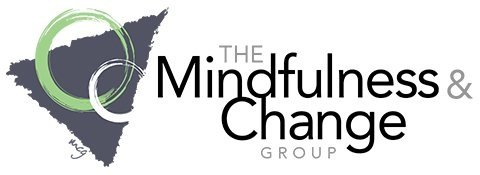The Role of Family-Based Therapy in Treating Childhood Anxiety and OCD
Childhood anxiety and Obsessive-Compulsive Disorder (OCD) are significant mental health issues that can have lasting impacts on a child’s development and overall well-being. Family-based therapy has emerged as a critical intervention in addressing these conditions, as it recognizes the influential role that family dynamics play in both the development and treatment of childhood anxiety and OCD. This article will explore how family-based therapy works, its benefits, and how it can be a powerful tool for families in the Greater Boston area and beyond.
Understanding Family-Based Therapy
Family-based therapy is a therapeutic approach that involves the entire family in the treatment process rather than focusing solely on the individual with the mental health condition. The rationale behind this approach is that a child’s anxiety or OCD does not exist in a vacuum; it is often influenced by family interactions, communication patterns, and the overall home environment (Ginsburg et al., 2011).
Key Components of Family-Based Therapy
Psychoeducation: Families are educated about the nature of anxiety and OCD, including how these disorders manifest in children and the factors that contribute to their maintenance (Freeman et al., 2008). Understanding the disorder is the first step in creating a supportive environment for the child.
Parent Training: Parents are taught specific strategies to help manage their child’s symptoms. This might include learning how to respond to anxiety-driven behaviors without reinforcing them or how to support their child through exposure tasks (Piacentini et al., 2011).
Communication Skills: Effective communication within the family is crucial. Therapy often focuses on improving communication patterns to ensure that the child feels supported without enabling anxiety-driven behaviors (Barrett et al., 2004).
Problem-Solving Skills: Families work together to develop problem-solving skills that can help them navigate the challenges posed by anxiety and OCD. This collaborative approach ensures that all family members are on the same page and can work together to support the child (Storch et al., 2007).
Benefits of Family-Based Therapy for Childhood Anxiety and OCD
Increased Parental Involvement: One of the primary benefits of family-based therapy is the increased involvement of parents in the treatment process. When parents are actively engaged, they can reinforce therapeutic techniques at home, leading to more consistent progress (Kendall et al., 2008).
Improved Family Dynamics: By addressing and improving communication and problem-solving within the family, therapy can help reduce conflict and stress, creating a more supportive environment for the child (Ginsburg, 2009).
Long-Term Outcomes: Research has shown that family-based therapy can lead to long-term improvements in children with anxiety and OCD. This is because the therapy equips families with the tools they need to continue supporting their child long after formal treatment has ended (Freeman et al., 2008).
Family-Based Therapy in the Greater Boston Area
For families in the Greater Boston area, accessing family-based therapy can be a crucial step in addressing childhood anxiety and OCD. MCG offers comprehensive family-based therapy programs designed to meet the unique needs of each family. Their experienced therapists work closely with families to develop customized treatment plans that address the specific challenges faced by the child and their family.
Family-based therapy offers a powerful and effective approach to treating childhood anxiety and OCD. By involving the entire family in the treatment process, this therapy helps create a supportive home environment that is crucial for the child’s recovery. For families in Boston and beyond, accessing family-based therapy can be the key to helping their child overcome anxiety and OCD and achieve long-term mental health.
References
Barrett, P., Farrell, L., Dadds, M., & Boulter, N. (2004). Cognitive-behavioral family treatment of childhood obsessive-compulsive disorder: Long-term follow-up and predictors of outcome. Journal of the American Academy of Child & Adolescent Psychiatry, 43(1), 12-19.
Freeman, J. B., Garcia, A. M., Coyne, L., Ale, C., Przeworski, A., Himle, M., & Leonard, H. L. (2008). Early childhood OCD: Preliminary findings from a family-based cognitive-behavioral approach. Journal of the American Academy of Child & Adolescent Psychiatry, 47(5), 593-602.
Ginsburg, G. S. (2009). The child anxiety prevention study: Intervention model and primary outcomes. Journal of Consulting and Clinical Psychology, 77(3), 580-587.
Ginsburg, G. S., Silverman, W. K., & Kurtines, W. M. (2011). Family involvement in treating childhood anxiety: A look ahead. Clinical Child and Family Psychology Review, 3(4), 299-309.
Kendall, P. C., Hudson, J. L., Gosch, E., Flannery-Schroeder, E., & Suveg, C. (2008). Cognitive-behavioral therapy for anxiety disordered youth: A randomized clinical trial evaluating child and family modalities. Journal of Consulting and Clinical Psychology, 76(2), 282-297.
Piacentini, J., Bennett, S., Compton, S. N., Kendall, P. C., Birmaher, B., Albano, A. M., & Ginsburg, G. S. (2011). 24- and 36-week outcomes for the Child/Adolescent Anxiety Multimodal Study (CAMS). Journal of the American Academy of Child & Adolescent Psychiatry, 53(4), 297-310.
Storch, E. A., Geffken, G. R., Merlo, L. J., Jacob, M. L., Murphy, T. K., Goodman, W. K., & Grabill, K. M. (2007). Family-based cognitive-behavioral therapy for pediatric obsessive-compulsive disorder: Comparison of intensive and weekly approaches. Journal of the American Academy of Child & Adolescent Psychiatry, 46(4), 469-478.
